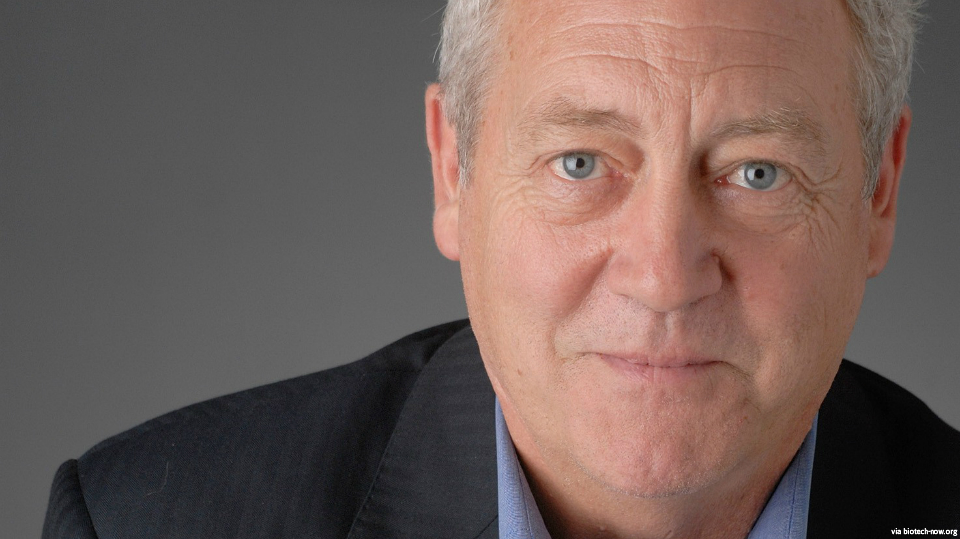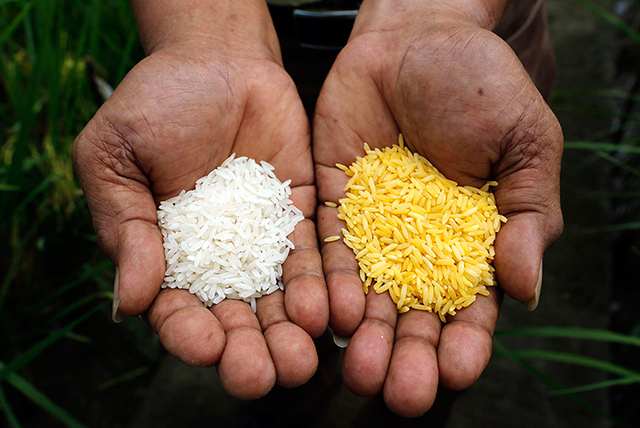Filtered By: Scitech
SciTech
Greenpeace ex-officer says blocking GMO rice is ‘immoral and illegal’
By BEA MONTENEGRO, GMA News

Pro-GMO environmentalist Dr. Patrick Moore says that blind opposition to Golden Rice is "immoral and illegal."
He singled out the activist group Greenpeace—which he claims he co-founded and for which he said he once served as a director—for raising money to oppose Golden Rice, without offering viable alternatives to address malnutrition. “This is immoral and illegal,” he stressed.
GMOs in the Philippines
The Philippines is currently one of the top planters of GM crops worldwide, ranking number 12 in a list of 28 countries. Greenpeace believes that this is something that should worry “every Filipino and the Philippine government.”
Biotech corn is the only GM crop currently approved for commercialization in the country, with Bt eggplant still stalled in the courts. Golden Rice was conceived in the 80’s, but has yet to be commercialized in the Philippines.


Regular rice (left) and genetically-modified Golden Rice (right).
Climate change and food security
The Philippines’ food security is threatened by extreme weather events, but majority of the GM crops grown in the country are used for animal feed instead of human consumption. According to Greenpeace, biotech corn’s “approved traits” for insect resistance and herbicide tolerance don’t actually contribute to food production and security.
In 2013, activists destroyed field trials of Golden Rice in Bicol, breaking down the fences and pulling up the plants.
Greenpeace said that this action shows the growing resistance of Filipino farmers against Golden Rice. “The truth is, GE ‘golden’ rice has so far distracted us from the reality of climate change and trapped us in the world of fiction,” they added.
Pushing for the commercialization of Golden Rice
Allow Golden Rice Now is a global campaign led by Moore, that is pushing for the commercialization of Golden Rice worldwide.
The Allow Golden Rice Society believes that Golden Rice is “the best solution” to address poverty and malnutrition. They argue that the science behind the creation of Golden Rice—and GM crops in general—is safe and the process itself has been deemed so by many respected scientific bodies.
Amalie Obusan, Country Director of Greenpeace Southeast Asia - Philippines counters that there is actually no Golden Rice. “It is instead a failed experiment; an ongoing 20 year experiment that has failed to feed anyone and is still stuck in a science laboratory.” Not only that, but it also takes away funding from solutions such as Vitamin A and micronutrient supplementation, food fortification, and the promotion of diverse, ecologically farmed diets.
Obusan added that if Golden Rice developers were truly sincere in their desire to help farmers, they should be supporting biotechnology similar to Masker Assisted Selection, a “smart breeding technique” that produces drought- and flood-resistant crops which are what needed in these times of climate change.
Allow Golden Rice Now is currently conducting its South Asia press tour, which will end on March 19 in Mumbai.
Moore's criticism of Greenpeace
Moore said he left Greenpeace due to a shift in its policies, and is now a vocal critic of the group.
Moore also said that Greenpeace uses GMOs as a front for funding and political agenda. He argues that not commercializing Golden Rice will bring more risks than approving its consumption, citing the number of children who go blind and then die because of Vitamin A deficiency.
Last year, the Food and Nutrition Research Institute (FNRI) released the results of a survey that showed that malnutrition is still prevalent among children below five years of age. One of the indicators that the FNRI used in its survey is micronutrient deficiency, which includes vitamin A.
According to Moore, he left Greenpeace in 1986 because he didn’t agree with the stance that Greenpeace was taking with multiple issues, believing that they lost their humanitarian perspective in favor of a more black-and-white one. He mentions that the group’s Ban Chlorine Worldwide campaign was the last straw, a campaign he did not agree with from a scientific perspective.
Greenpeace's response to Moore's claims
When asked for comment, Greenpeace belied Moore's claims. They said that Moore “applied for a berth on the Phyllis Cormack” in 1971, when Greenpeace was already a year old. The Phyllis Cormack is the ship Greenpeace used to protest nuclear weapons testing in the Aleutian Islands.
However, in an email to GMA News Online, Moore's camp pointed out that Greenpeace as an organization didn't exist yet in 1971; "Greenpeace" was supposedly the name of the journey itself carried out by the Phyllis Cormack, which Moore participated in.
According to journalist Rex Weyler, the Greenpeace Foundation was established in January, 1972. — TJD, GMA News
However, in an email to GMA News Online, Moore's camp pointed out that Greenpeace as an organization didn't exist yet in 1971; "Greenpeace" was supposedly the name of the journey itself carried out by the Phyllis Cormack, which Moore participated in.
According to journalist Rex Weyler, the Greenpeace Foundation was established in January, 1972. — TJD, GMA News
More Videos
Most Popular



